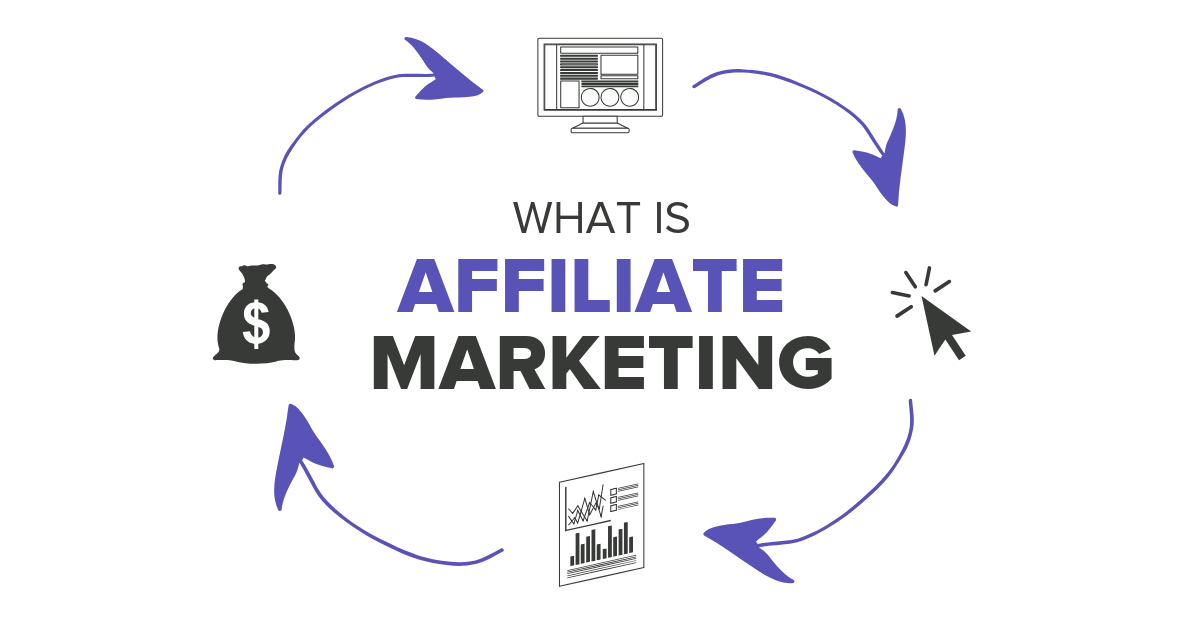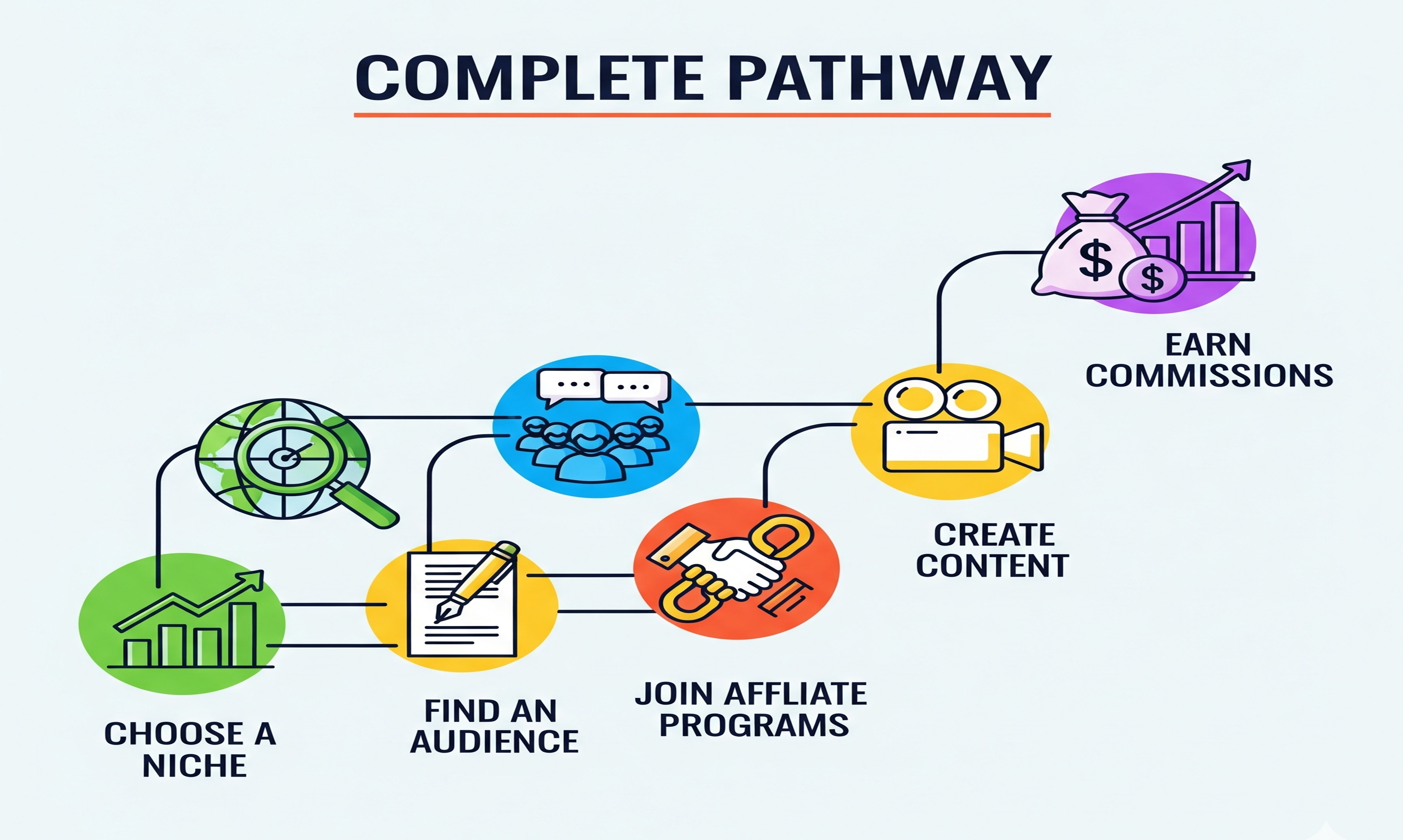9 Best Email Marketing Platforms in 2025: A Complete Guide

Share this article:
Reading time: 18 min read
Email is not just a channel, it’s the bridge between your brand and your audience, turning engagement into trust, and trust into revenue.
One of the most effective strategies to drive a significant and consistent amount of traffic to your website is email marketing. I fully understood this important strategy after several failures and downturns trying to drive traffic to my website. I failed massively until I learned all the tricks and tips.
However, one of the major challenges is choosing the right email marketing platform. The right platform can make or break your entire marketing strategy. Not all email marketing tools were built for the same purpose. For example, while SendGrid is a great tool for email marketing, it was developed for developers and businesses using email APIs to send email. Now, if you are a small business owner, and of course not a developer, paying for this tool may not give you the results you want because it may not be the most effective.
Your choice of platform must be aligned with what you want to achieve from your marketing journey. If your aim is to improve deliverability, personalization, automation, affordability, and multi-channel communication, then you should look at** Brevo.** Look, whether you’re a creator, small business, or an enterprise, having the right email marketing software ensures your campaigns are efficient, engaging, and scalable.
According to Christopher Ross from Statista, email marketing remains one of the most cost-effective digital marketing channels, offering an impressive return of $36–$45 for every dollar spent. It not only converts better than social media or online ads but also helps build a loyal audience.
In this article, Affiliate Marketing: My Hard-Learned Lessons on Building Trust, I explain how lack of trust eroded my efforts in building my email list. Well, let’s stick to the topic. With dozens of options available for email marketing programs today, I’ve curated a list of the 9 best email marketing platforms, evaluated for ease of use, integrations, automation, AI-powered features, and deliverability. Personally, I am using two of these platforms for my email campaigns.
Some of the most popular platforms include Mailchimp email marketing, which is excellent for beginners and small businesses, as well as tools for shopify marketing automation. If you’re just starting out, there are free email marketing programs and free email blast programs that allow you to test your campaigns without a large budget. Leveraging the right marketing services email solutions can dramatically improve engagement, growth, and your ROI.
Choosing the Right Email Marketing Platform
The table below provides a quick comparison of the top nine email marketing platforms, highlighting their shared capabilities, unique advantages, and the specific challenges they help businesses overcome. While all platforms offer essential tools like automation, analytics, and audience segmentation, each one stands out for different reasons
| Platform | Features | Strengths | Problems It Solves |
|---|---|---|---|
| Hostinger Reach | AI-assisted email creation, automation, analytics, GDPR-compliant | Designed for beginners and solopreneurs; AI-powered templates; low-cost entry | Simplifies email design and automation for non-tech users; reduces content fatigue and cost barriers |
| Omnisend | Automation, segmentation, analytics | Focused on e-commerce; integrates email, SMS, and web push | Solves poor engagement and low conversions through multichannel automation |
| MailerLite | Drag-and-drop builder, automation, analytics | Simplified interface; website and blog builder included | Helps beginners build campaigns fast; saves time and reduces complexity |
| HubSpot | CRM integration, automation, segmentation, analytics | Full inbound marketing suite (email, CRM, landing pages, workflows) | Solves disjointed marketing systems by integrating CRM, automation, and analytics |
| Klaviyo | Automation, segmentation, analytics, personalization | Deep data-driven targeting and predictive analytics | Solves lack of personalization and ROI tracking by leveraging customer data |
| Mailchimp | Templates, automation, analytics, A/B testing | Broadest toolset with social and landing page integration | Solves brand inconsistency and engagement through unified marketing tools |
| Brevo (Sendinblue) | Automation, CRM, compliance tools | Supports SMS, WhatsApp, multilingual UI | Solves accessibility and compliance issues for small global businesses |
| SendGrid | Email automation, analytics, deliverability tools | Developer-focused API and SMTP service | Solves deliverability and scalability issues for large email volumes |
| Mailgun | Deliverability tools, analytics, API integration | Built for developers; focuses on transactional and bulk emails | Solves technical deliverability, reliability, and performance challenges |
Top 9 Email Marketing Platforms
1. Hostinger Reach
Let’s begin with Hostinger Reach. This is a beginner friendly, AI powered email marketing platform designed with creators, solo entrepreneurs, and small business owners in mind. It helps you design inbox ready newsletters in minutes, grow your audience, and keep your marketing budget under control, all with zero hassle. Originally, Hostinger is known as a web hosting company. meanwhile, they have expanded their services to offer more value to its users, a smart move for both customer retention and attraction. On June 10, 2025, the company launched Hostinger Reach, marking its official entry into the AI email marketing space. The platform integrates Wordpress and automates email sequences making it a perfect fit for small businesses and online projects. Plus, it works smoothly with other platforms, including Netlify, which makes it even more versatile.
Not too long ago, crafting an email campaign meant writing lines of HTML code just to get a decent looking layout. As a matter of fact, this is still happening in some platform; Brevo, for example. Hostinger Reach removes the complexity of building engaging, high converting emails with HTML code. It makes the job simple for you.
Key Features: AI-powered template creation, Flexible editor with customization, Automated sequences and real-time analytics, GDPR and CAN-SPAM compliant.
Drawbacks: Advanced features like landing page builders are still in development.
Pricing: Free 1-year trial, Paid plans from $1.99/month for 500 contacts.
2. Omnisend
If you are into e-commerce, Omnisend is perfect for scalability! But don’t just take my recommendation at face value, try it out for yourself. As the proverb says, “do not put your two legs in a river to test its depth.” Apply the same principle when adapting an email marketing platform or any software as a service (SaaS) platform. Sign up for the free plan first, test it thoroughly, and if it delivers the results you want, upgrade to a paid plan to upscale your campaigns.
Omnisend email marketing enables multichannel automation, allowing you to integrate email, SMS, and web push campaigns. Using AI-powered product recommendations and automated workflows, it helps increase conversions efficiently. Whether you’re running a Shopify store, WooCommerce shop, or BigCommerce site, Omnisend has become a prominent choice for e-commerce merchants.
The platform features a drag-and-drop email builder, pre-built automation workflows for welcome series, abandoned cart recovery, and order confirmations. Advanced segmentation and personalization help target customers based on behavior and preferences. Omnisend also provides detailed analytics and reporting tools, allowing businesses to optimize campaigns and make data-driven decisions.
Other key features include Omnisend WordPress integrations and Omnisend WooCommerce connectivity, making it easy to sync with popular platforms. For Shopify merchants, Omnisend email marketing Shopify provides seamless automation to grow sales and engagement. The platform also supports Omnisend forms for lead capture and integrates with community discussions on platforms like Omnisend Reddit, expanding your marketing reach.
With Omnisend marketing automation, you can manage multiple channels in one platform, improve customer engagement, and scale your campaigns intelligently. Start with the free plan, experiment, and watch your e-commerce business grow.
Key features: Email Marketing, SMS Marketing, Analytics and Reporting, Automation Workflows, Web Push Notifications
Drawback: Limited Customization Options, Learning Curve, Email Editor Usability, Limited Segmentation Filters, Limited Advanced Features.
Pricing: Free trail plan, paid plan starts from 16$/month.
3. MailerLite
MailerLite is a modern, user-friendly email marketing platform designed to help businesses, entrepreneurs, and creators build meaningful connections with their audiences. The platform stands out for its simplicity and intuitive design, making it accessible even for beginners who are new to email marketing. With its drag-and-drop editor, users can easily design professional-looking newsletters, promotional emails, and automated campaigns without needing any coding skills. Every element, from text blocks to images, buttons, and embedded videos can be customized to reflect a brand’s unique identity, ensuring visually appealing and engaging communications.
Beyond basic email creation, MailerLite offers a powerful marketing automation system that enables users to create personalized customer journeys. Automated workflows can be set up for welcome emails, product recommendations, birthday greetings, or post-purchase follow-ups, helping businesses nurture relationships and increase engagement with minimal effort. These automation features are complemented by advanced segmentation and personalization tools, allowing users to target specific groups of subscribers based on their behavior, preferences, or past interactions. This results in more relevant messaging and higher conversion rates. The platform also provides detailed analytics and reporting dashboards that give insights into campaign results. Users can monitor key metrics such as open rates, click-through rates, and subscriber growth trends, as well as track sales generated from email campaigns.
Key features: Drag-and-Drop Email Editor, Email Automation, Website & Blog Builder Advanced Segmentation & Personalization, A/B Testing, E-commerce Integrations
Drawback: While MailerLite supports e-commerce integrations, it may not offer the comprehensive features needed for large-scale online stores. For users requiring advanced functionalities like A/B testing or in-depth customization, MailerLite's offerings may be insufficient.
Pricing: Free trial. Paid plan begins at $9/month, this plan includes additional features such as custom domains, advanced analytics, and priority support.
4. HubSpot — The Marketing Hub
In the early 2000s, MIT graduate students Brian Halligan and Dharmesh Shah noticed a growing problem in the marketing world as traditional advertising was losing its effectiveness. Consumers were tuning out cold calls, ignoring banner ads, and skipping TV commercials. People no longer wanted to be interrupted; they wanted useful, trustworthy information that helped them make better decisions. To solve this, Halligan and Shah founded HubSpot in 2006.
HubSpot was built to help businesses attract customers through valuable content, search visibility, and meaningful engagement instead of intrusive ads. HubSpot aimed to fix the disconnect between how companies tried to sell and how people actually wanted to buy. Now, if you are in the habit of providing valuable and trustworthy information to help people get what they want, try HubSpot today! This comprehensive inbound marketing, sales, service, and CRM platform was designed to help businesses manage interaction with customers across multiple channels.
For example, HubSpot provides a unified CRM (customer-relationship management) database where contacts, companies, deals and tickets are stored, which then ties into various “hubs” for example, Marketing Hub, Sales Hub, etc. The idea is that instead of having separate tools for email marketing, CRM, landing pages, sales tracking, etc, you can manage them all in one integrated system.
The tools allow you to build email campaigns, send newsletters, set up automated workflows, segment contacts, view analytics, integrate with your website, forms and chatbots, and then tie those contacts into the same system that your sales and service teams use.
Key Features: Drag-and-Drop Email Editor, AI-Generated Conten, Automated Workflows A/B Testing, CRM Integration
Drawback: The pricing escalates rapidly once you move beyond the free or starter tiers; many users report that paid tiers become very costly, especially as contact volumes or seats increase. Many of the more advanced features, such as automation branching, A/B testing, detailed custom reporting, advanced integrations, are all locked behind higher-level plans, meaning smaller businesses may find themselves paying a lot to get what they might consider “standard” features.
Pricing: Free plan from $0/month and paid plan from $9/month. For business and enterprises, plan begins from $800/month
5. Klaviyo—Data Customer Center
In today’s digital marketplace, businesses generate enormous amounts of customer data across multiple touchpoints, from online purchases and email subscriptions to website visits and social interactions.
However, most struggle to unify this data into a single, actionable view. Klaviyo solves that problem by bringing all customer data together in one platform, giving businesses a clear picture of who their customers are, what they care about, and how they interact with the brand.
If your goal is to understand and turn your customer data into powerful, personalized marketing that drives revenue and builds lasting relationships, create an account with Klaviyo and begin mapping your customers by their preference. Klaviyo’s
purpose is to help your business collect, understand, and act on customer data to create more meaningful and profitable relationships. By using Klaviyo, you can move beyond generic, one-size-fits-all marketing to deliver personalized messages that feel relevant to each customer.
Key features: Customer Profiles & Segmentation, Automation Flows (Email & SMS) Templates & Campaign Builder, Integrations, Analytics & Predictive Metrics
Drawbacks: Cost escalates quickly: Many users report that as their list grows (or they import many “profiles”), the pricing jumps, making it expensive for larger lists or businesses scaling up. While the basic campaign building is fairly intuitive, diving into advanced segmentation, predictive metrics, custom automation flows, and integration set-ups can require time and expertise.
Pricing: Free plan with paid plan beginning from $20/month for email only, $35/month for email + SMS/Mobile Plan
6. Mailchimp— Automated Email Campaigns to Advanced
Running a business today means juggling multiple marketing tools, managing customer data, and trying to stand out in a crowded digital world — all while keeping costs down. Many small and growing businesses struggle with the same problems: marketing feels too technical, too expensive, and too time-consuming. That’s the gap Mailchimp was built to close.
In 2001, Ben Chestnut and Dan Kurzius founded Mailchimp to help businesses simplify their marketing and turn customer relationships into real growth. With Mailchimp, you don’t need a big marketing team or advanced design skills, the platform gives you everything you need in one place. You can create beautiful, professional email campaigns, automate customer follow-ups, segment your audience based on behavior, and analyze results to understand what works. This means less guesswork and more results.
Businesses also use Mailchimp to solve deeper challenges like inconsistent branding, low customer engagement, and lack of data insights. By connecting all your marketing channels email, social media, landing pages, and more, Mailchimp helps you build stronger connections, personalize communication, and drive repeat sales. The platform’s robust analytics tools give users detailed insights into how their campaigns perform, including open rates, click-through rates, subscriber engagement trends, and revenue attribution for e-commerce businesses.
Key features: Drag-and-Drop Email Builder, Pre-built Templates, A/B Testing, Advanced Segmentation, AI-Powered Content Optimization, Social Media Integration, Comprehensive Analytics
Drawbacks: The pricing structure can become expensive as your contact list grows. While Mailchimp presents itself as a “CRM + marketing” tool, its CRM functionality is basic compared to dedicated CRM platforms, so users needing deep customer-relationship management might find it lacking.
Pricing: Free Plan: $0/month, allows a small number of contacts. Paid plan starts from $13/month.
7. Brevo (Formerly Sendinblue)
Many small and medium-sized businesses (SMBs), nonprofits, and organizations face a common challenge: managing customer relationships and marketing automation effectively without investing in expensive or overly complicated software. Traditional CRM platforms and email marketing tools are often built for large enterprises, leaving smaller teams struggling with systems that are hard to use, inaccessible in multiple languages, or too costly to maintain. This makes it difficult to engage customers, send personalized email campaigns, track performance metrics, and grow sustainably.
Brevo (formerly Sendinblue) was created to solve these exact problems. Brevo is a cloud-based marketing automation platform and email marketing solution rebranded from Sendinblue in 2023. It combines email marketing, transactional email, customer relationship management (CRM), SMS marketing, and live chat into one approachable, easy-to-use interface. The platform also integrates with WordPress, Shopify, and WooCommerce, making it an excellent choice for e-commerce email marketing.
By offering features in six languages, a forever free plan, and free digital marketing training through Brevo Academy, Brevo empowers businesses and nonprofits to build stronger, more human, and personalized customer relationships. Its AI-powered automation, segmentation tools, and multichannel marketing campaigns (email, SMS, chat, and transactional messaging) enable users to send highly targeted messages at the right time.
With Brevo CRM, you can manage customer data, automate email workflows, and track the entire customer journey from signup to conversion. The platform simplifies email marketing and CRM so organizations of all sizes can engage their audience, improve customer retention, and grow sustainably—without the complexity or cost of traditional enterprise marketing software.
Key Features: Multichannel marketing (email, SMS, WhatsApp), Automation workflows and AI predictive sending, Built-in CRM and landing page tools, GDPR compliance
Drawback: features like email, SMS, and CRM tools, its automation and advanced reporting capabilities are less robust compared to competitors like HubSpot or Klaviyo. This can make it challenging for larger businesses or data-driven marketers to implement highly complex workflows, perform deep segmentation, or gain granular insights from campaigns.
Pricing: Free plan available with unlimited contacts, up to 300 emails per day, includes templates, drag-and-drop builder, and core features.; Paid plans from $9/month.
8. SendGrid: Reliable Email Delivery at Scale
Email is the most effective and preferred channel for business communications, yet sending it reliably at scale can be surprisingly difficult. Many businesses struggle with email deliverability issues, such as messages failing to reach the inbox, being delayed, or getting caught in spam filters. These challenges can frustrate customers, reduce engagement, and even lead to lost revenue. Without the right infrastructure and expertise, managing high-volume email campaigns while maintaining performance becomes a major obstacle.
This is where SendGrid email marketing truly excels. SendGrid solves this problem by providing reliable, scalable email infrastructure trusted by leading businesses worldwide. Its proprietary mail transfer agent (MTA) delivers over 90 billion emails per month with a median delivery speed of 1.9 seconds, while its globally distributed, cloud-based email system ensures consistent performance — even during peak traffic.
Beyond speed and reliability, SendGrid’s email deliverability tools help maximize inbox placement, ensuring your campaigns reach customers every time. Businesses can maintain engagement and strengthen their brand reputation by leveraging SendGrid’s robust email marketing automation, email API, and analytics tools.
Key features: The platform is designed to be flexible and developer-friendly, combining powerful email APIs, detailed documentation, and an intuitive user interface. This enables businesses to integrate SendGrid with WordPress, Shopify, or custom-built applications seamlessly.
Drawback: The user interface and design tools are less intuitive or user-friendly compared to marketing-first platforms; many features require technical/HTML knowledge rather than fully drag-and-drop workflows. On lower tiers, the use of shared IP pools (instead of dedicated IPs) may negatively impact deliverability if other senders in the pool have poor practices.
Pricing: The free tier allows basic sending (for small volumes) with limited features (e.g., up to 100 emails/day for 60 days trial on some plans) and no dedicated IPs or sub-users. Paid plan starts from US $19.95/month.
9. Mailgun—The Email Blast
Since its founding in 2010, Mailgun has been built with one clear mission: to provide developer-friendly, API-based email services that make it easy to integrate email into any application. Unlike other platforms distracted by flashy features, Mailgun has remained laser-focused on what matters most: deliverability, reliability, and performance.
Today, hundreds of thousands of companies and leading brands worldwide trust Mailgun to send hundreds of billions of emails every year. By using Mailgun, your business can ensure that every message reaches its destination quickly and securely, while gaining the flexibility to customize and automate email workflows to meet your unique needs.
Whether you’re sending transactional messages, marketing campaigns, or customer notifications, Mailgun provides the tools, APIs, and expertise to maximize inbox placement, track engagement, and optimize results. Choosing Mailgun means choosing a platform built for developers and businesses that value precision, reliability, and growth.
Key Features: Email API & SMTP Relay, Email List Management & Segmentation, Deliverability & Reputation Tools, Email Parsing & Inbound Routing, Analytics, Logs & Event Tracking, Template Building & Previews
Drawback: While Mailgun excels at email deliverability and offers powerful APIs for developers, its platform can be very challenging for non‑technical users, the interface is often described as complex, many advanced features sit behind higher‑priced tiers, and the support for lower or free plans is limited, which can hinder smaller teams or businesses without dedicated technical resources.
Pricing: Free plan with Up to 100 emails per day; 1 custom sending domain; 1 inbound route; 1 day log retention; basic analytics & reporting; ticket support. Paid plan starting from $15/month with 10,000 emails/month (no daily limit), REST API + SMTP, email logs, analytics, 1 sending domain, etc.
Final Thought
Choosing the best email marketing platform depends on your business goals, budget, and the level of automation and personalization you need. From my experience, Brevo (formerly Sendinblue) stands out for businesses ready to scale. With AI-powered automation, multichannel campaigns (email, SMS, chat, and transactional messaging), and advanced segmentation tools, Brevo enables highly targeted communication with your audience. Its flexibility, comprehensive email marketing tools, detailed analytics, workflow automation, and deliverability optimization make it ideal for businesses seeking a unified marketing platform that grows with them.
On the other hand, Hostinger Reach is perfect for beginners or small businesses that prioritize simplicity and speed. Its intuitive interface allows you to quickly create and send email campaigns without extensive technical knowledge. While it may not offer the advanced automation or AI-driven insights of Brevo, it provides all the essential features for email marketing, list management, and performance tracking — making it an excellent starting point for businesses just beginning their email marketing journey.
I currently use both Brevo and Hostinger Reach for my own email marketing campaigns, and this combination gives me a strong strategic advantage. I rely on Hostinger Reach for quick campaigns, experiments, and testing ideas, while Brevo manages more complex automated workflows and multichannel campaigns. Together, these two platforms make my email marketing efforts more efficient, targeted, and adaptable, helping me connect with my audience effectively at every stage of engagement.
Until we meet again, cheers to your success in whatever you want to achieve!





